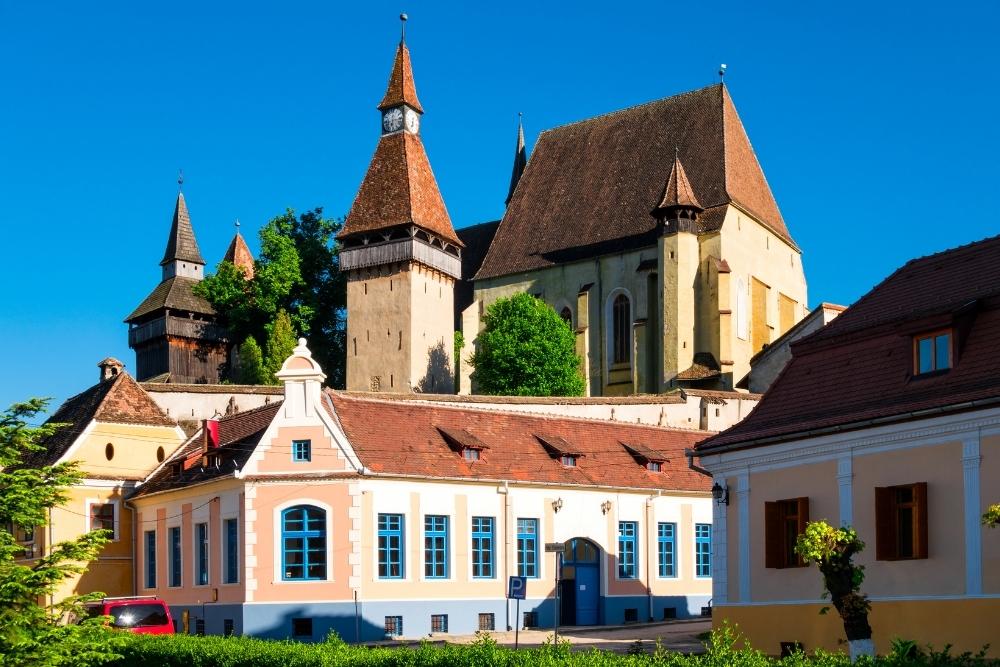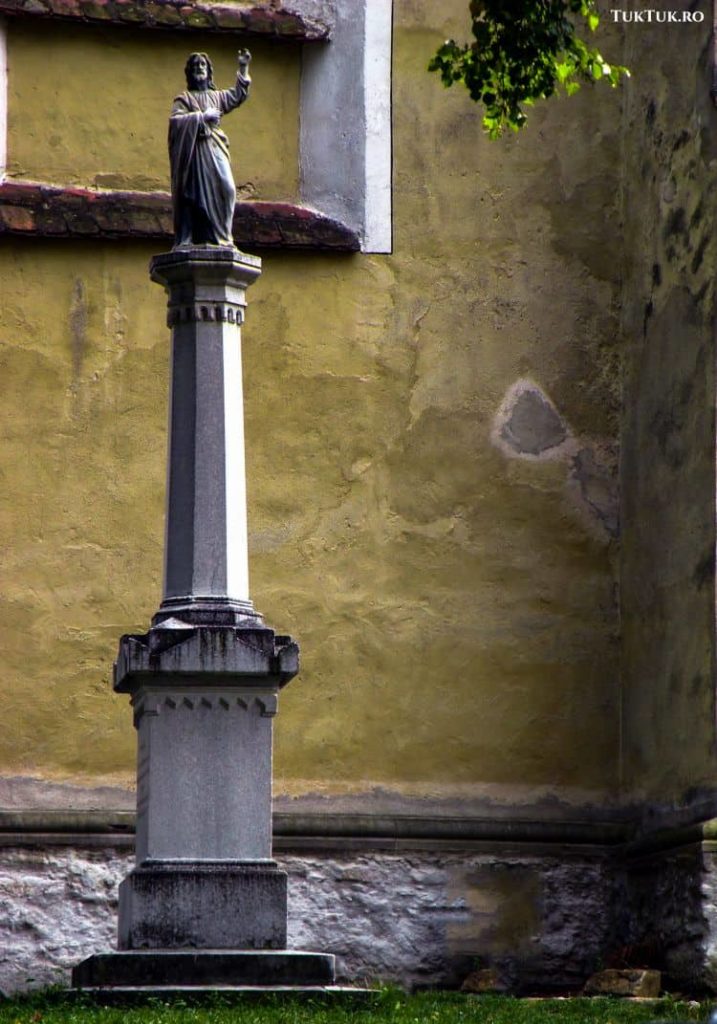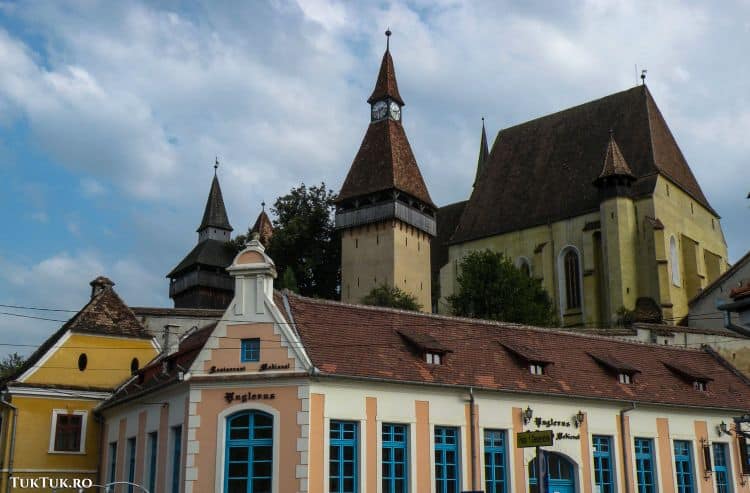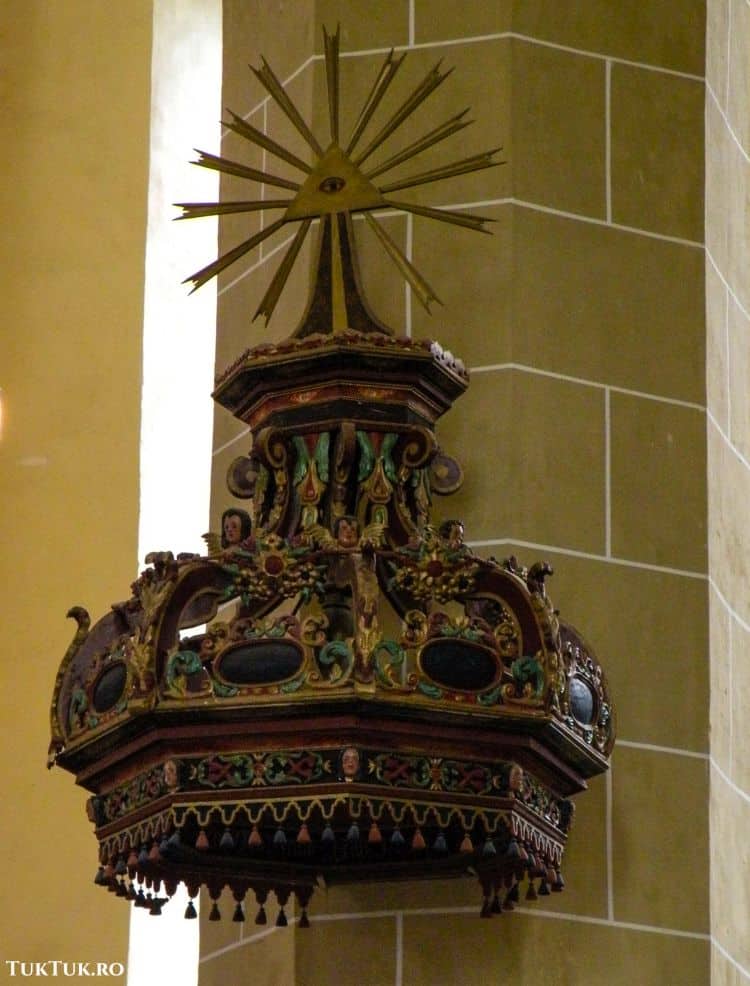Those who visit the Transylvania region of Romania, and especially the fortified churches in the middle of the country, will not bypass a village that has become famous in recent years, primarily because Prince Charles of England visited it often and promoted it: Biertan. Usually, the “touch” of British royalty would not have been needed: Biertan is a place so beautiful that it tells visual stories to anyone who has the inspiration to step on its roads and, in particular, to visit its fortified church.
Located in the northern part of Sibiu county, between Medias and Sighisoara, Biertan was mentioned for the first time in 1283 as a Saxon settlement. Traditionally, the village developed an administrative organization that centered the church with its fortification belt as time went by. Built on a hill, between 1490 and 1520, in late Gothic style, the church is one of the best-preserved fortified churches of about 300 built in Transylvania in the 15th and 16th centuries.
Biertan, a church built with a reconciliation room for couples

The main part of the medieval complex is the church itself, one large, which comprises three halls equal in height. The church’s altar was made by architectural craftsmen from Nurnberg and Vienna, being the largest in Transylvania, with 28 painted panels. The pulpit is carved in stone, and one of the most interesting elements of the construction is the sacristy door, crafted in 1515, which has a unique closing system (has no less than 19 locks!), awarded at the World Exhibition in Paris, in 1900.
The organ dates from 1869, being the work of the famous Carl Hesse in Vienna. Inside, the valuable painted pews in the workshop of master Johannes Reichmuth in Sighisoara in the early 16th century and oriental carpets or flags that belonged to the guilds in Biertan.
The complex includes, besides the church, a clock tower, the Catholic tower (symbol of religious tolerance opposite the Catholics), the Mausoleum Tower (where there are priests’ tombs), the prison bastion tower (or the reconciliation room, where they were imprisoned, in armistice, those who wanted to divorce, giving them time to change their minds), the City Hall tower, and the bastion of the weavers.
The patriarchal atmosphere of Biertan bears the memory of the 1600 Saxons who lived here in the ’70s, unfortunately, imputed over time, up close to zero. Biertan can no longer be considered a Saxon town but here takes place almost every year, the meeting of Transylvanian Saxons. If you want to stay in Biertan, the most affordable solution is the Unglerus Pension (Unglerus Medieval resort), located right at the foot of the church’s hill, which also has an interesting restaurant and a wine cellar.
You may also like: How to spend two days in the Danube Delta of Romania







